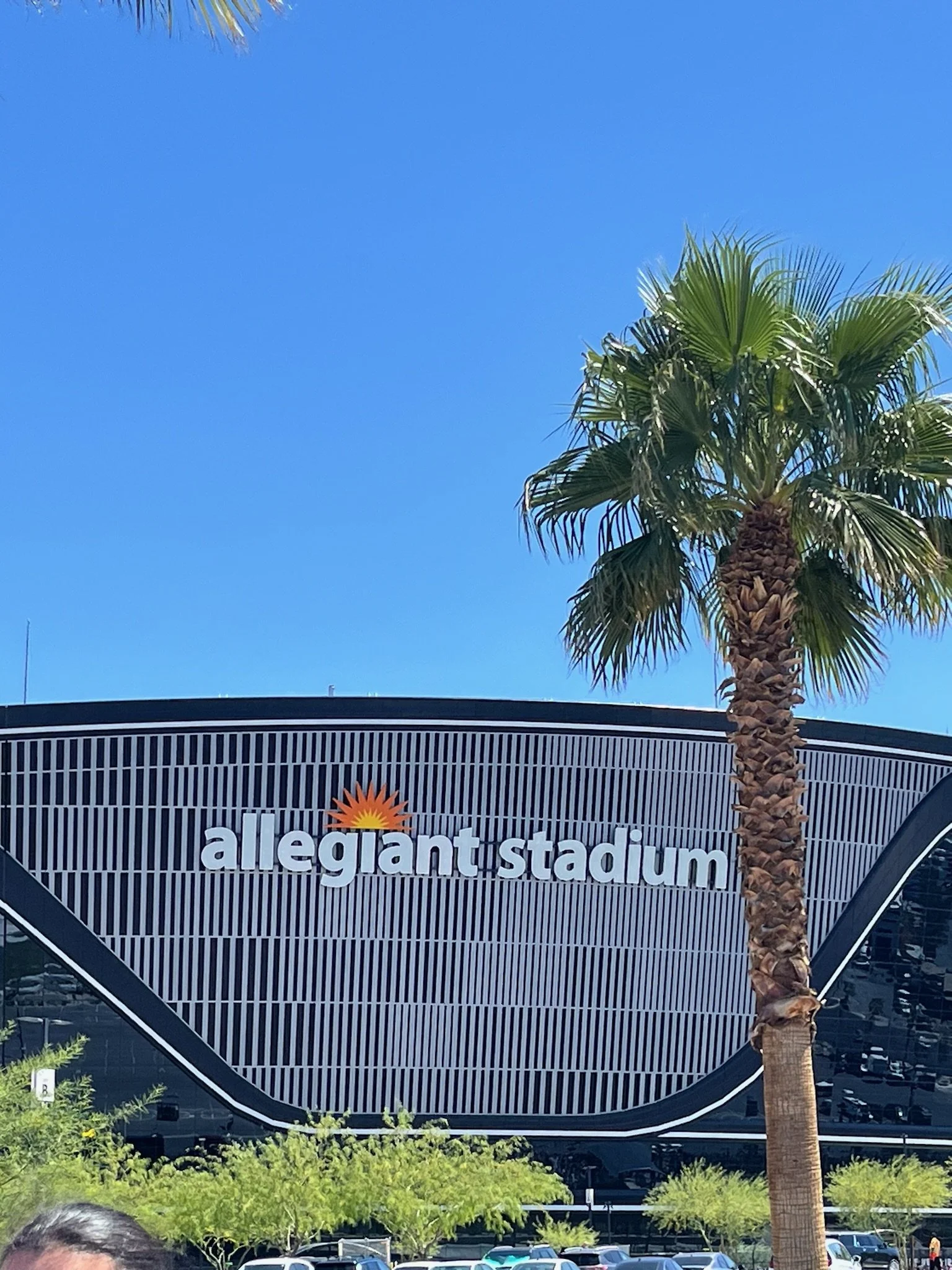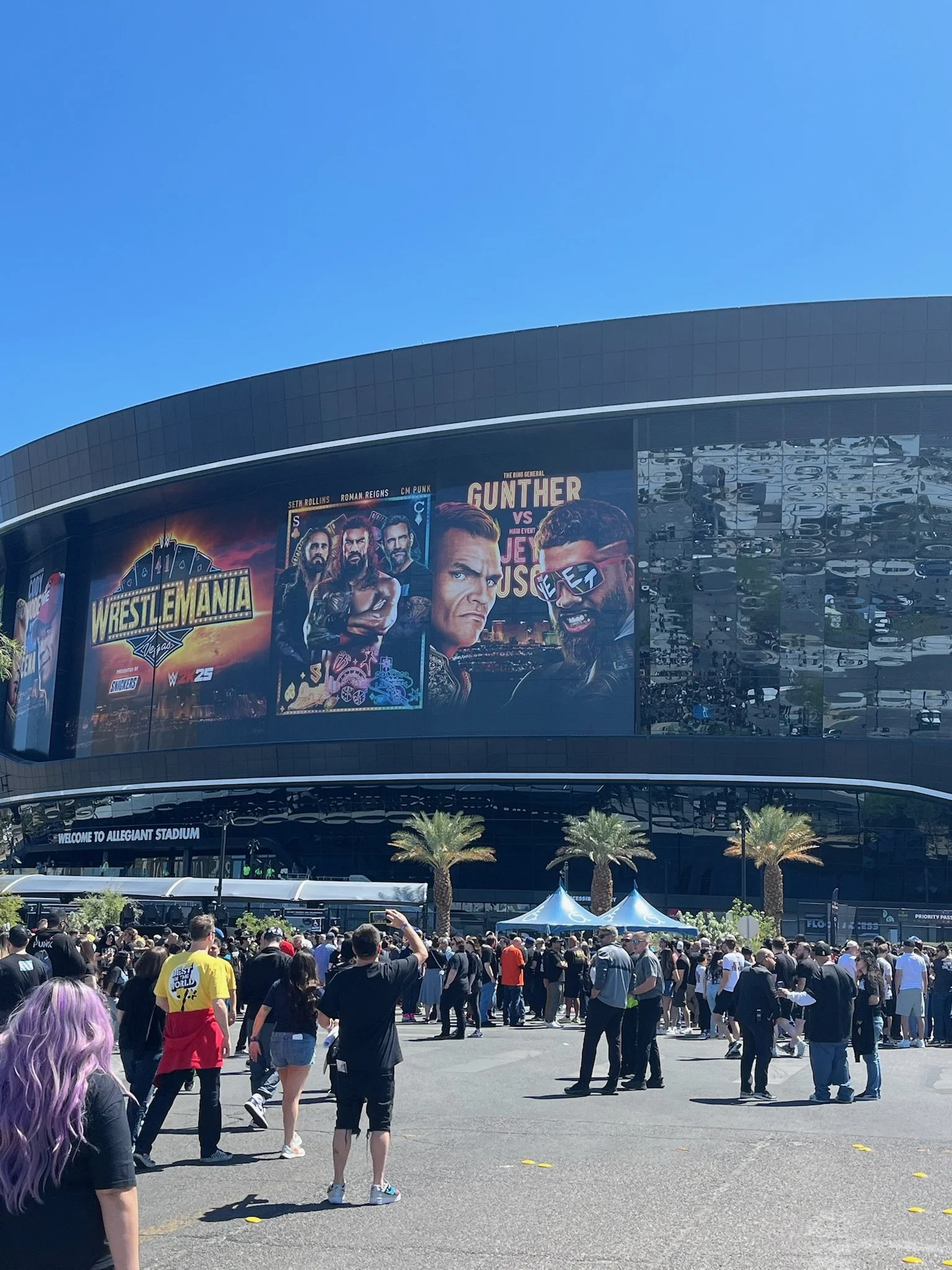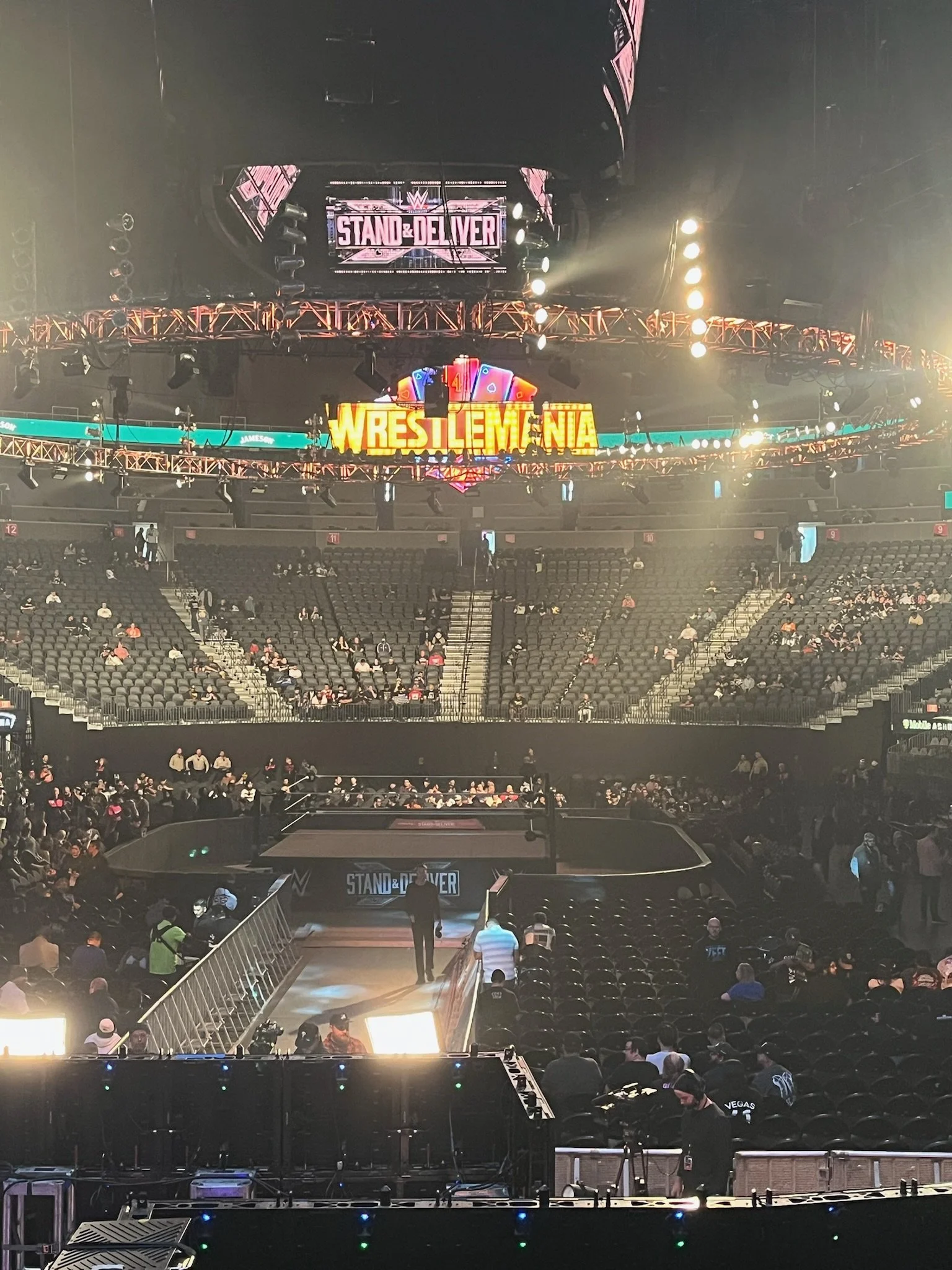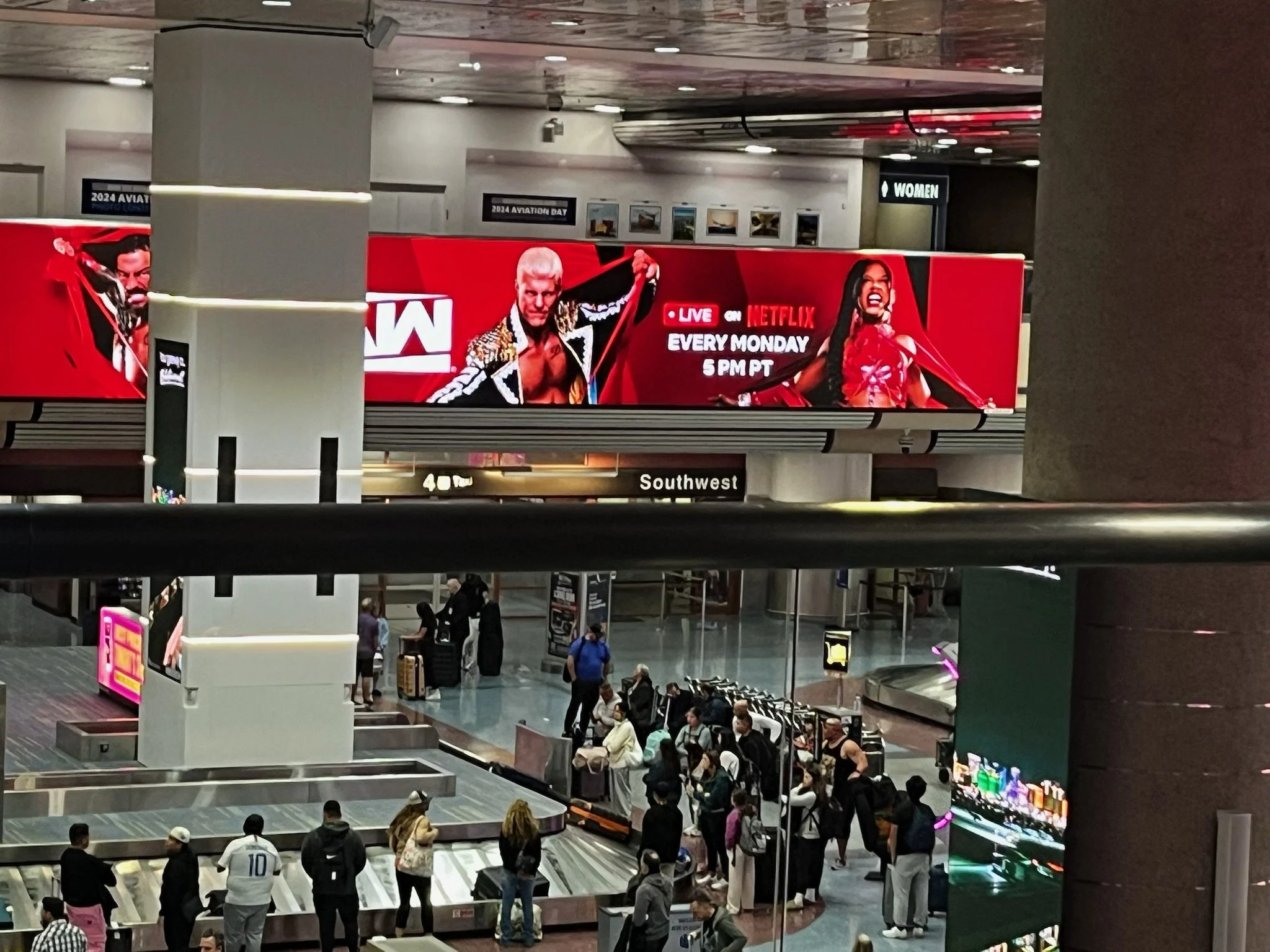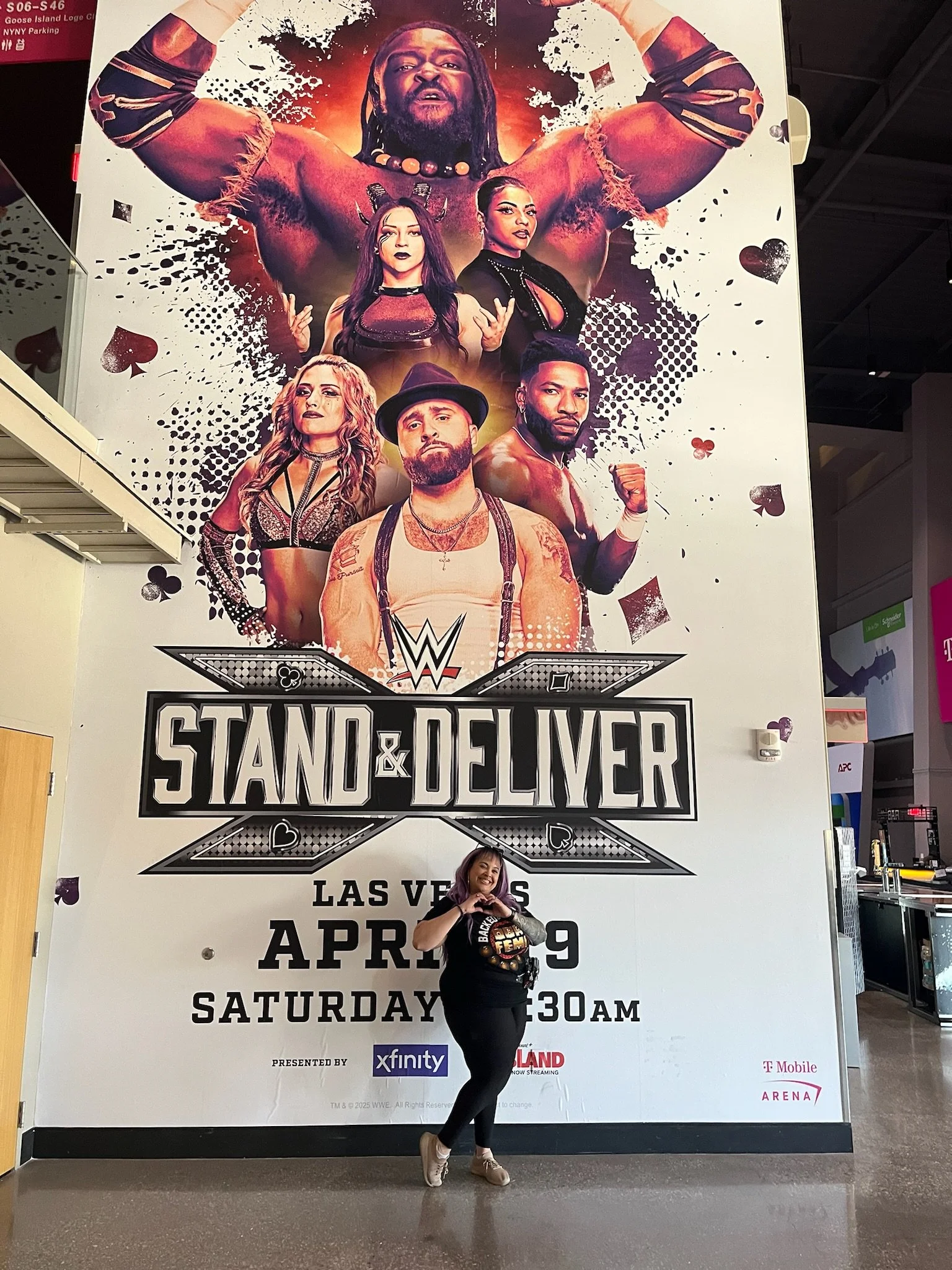WrestleCon: The Price of Greatness
WrestleMania: Las Vegas was a wrestling fan's paradise, at least on the surface. The city buzzed with 80,000+ fans converging for WWE's biggest spectacle, as Allegiant Stadium hosted two nights of modern wrestling excellence, and the energy was absolutely electric. I spent the weekend immersed in it all: NXT Stand & Deliver on Saturday afternoon, both nights of WrestleMania 41, and the countless independent shows that transformed Vegas into wrestling's temporary capital.
But it was my visit to WrestleCon at the Westgate Las Vegas Resort & Casino that provided the weekend's most profound moment, one that fundamentally changed how I view our beloved wrestling industry and forced me to confront an uncomfortable truth about how we treat the legends who built the foundation upon which today's billion-dollar empire stands.
Walking through the halls of WrestleMania weekend, you're struck by the sheer scale of WWE's current success. The production values are movie-quality, the athletes are physical specimens, and the financial rewards for today's top stars are astronomical. Cody Rhodes, Roman Reigns, and the current roster perform in front of massive crowds with guaranteed contracts, possible health benefits, and retirement planning (with planning) that previous generations could only dream of.
Then you step into WrestleCon, and reality hits you like a steel chair to the gut.
Separated by just a few miles but what feels like different universes, wrestling legends sit behind modest tables, charging $20-$80+ for autographs and photos, not because they want to relive their glory days, but because they need to make ends meet. These are the same performers who sacrificed their bodies, their families, and often, their futures, to entertain us when wrestling was far less lucrative and infinitely more dangerous.
Rob Van Dam
My first stop was Rob Van Dam's table, and I wasn't prepared for what I encountered. There sat Mr. Monday Night, the innovator who helped bridge the gap between hardcore ECW and mainstream WWE success, confined to a wheelchair (from a wrestling injury), a stark reminder of what decades of high-impact wrestling does to the human body.
Sitting at the table directly next to RVD was Sabu, another ECW legend whose hardcore style helped define an entire generation of wrestling. While Rob Van Dam maintained his characteristic positivity, Sabu looked exhausted, almost defeated. There was a weariness in his eyes that went beyond physical fatigue; it was the look of someone who had given everything to an industry that had largely forgotten him.
SideNote: Less than a week later, Sabu passed away.
RVD revolutionized what we expected from wrestlers. His athletic ability, charisma, and willingness to put his body on the line night after night helped define an entire era. Those Van Daminator kicks, the Five-Star Frog Splash from increasingly dangerous heights, and countless unprotected chair shots weren't just moves—they were investments in our entertainment that his body is still paying dividends on today.
What struck me most wasn't his physical condition, though. It was his genuine happiness. Despite being wheelchair-bound, despite needing these convention appearances to supplement his income, Rob Van Dam was absolutely glowing as he interacted with fans. He remembered storylines, laughed at inside jokes, and seemed genuinely grateful for every interaction.
That gratitude broke my heart.
Here's a man who gave everything to entertain us, whose innovative style influenced countless wrestlers who now earn millions, and he's still giving. Still making fans happy, still putting others first, still being Rob Van Dam, even when the industry that profited from his sacrifice has largely moved on without ensuring his financial security.
The Steiner Bros.
The craziest irony of the weekend came when I approached The Steiner Brothers' table. Rick and Scott Steiner, legitimate wrestling royalty who dominated tag team wrestling for over a decade, were signing autographs and taking photos for $40 a piece, the same weekend that Rick's son Bron Breakker was preparing for his WrestleMania debut just miles away.
Think about that for a moment. The Steiner Brothers helped define what tag team wrestling could be. Their combination of legitimate amateur wrestling credentials, incredible strength, and Scott's eventual transformation into Big Poppa Pump created moments that wrestling fans still reference decades later. They were drawing huge crowds and moving merchandise when WWE was still finding its footing as a national company….
Yet here they were, working the convention circuit while their descendant enjoys the benefits of modern WWE contracts, guaranteed money, Possible health insurance, planned retirement planning, and the kind of financial security that eluded their generation. Bron Breakker will likely earn more in his first few years than his father and uncle made in their entire careers, and he'll do it with significantly better medical care and long-term support.
The generational divide isn't just about money, it's about respect, recognition, and responsibility. These men built the house that today's stars live in, but they're not welcome at the family dinner table.
Greg “The Hammer” Valentine
My most emotionally impactful encounter came at Greg "The Hammer" Valentine's table. I'll admit, I almost walked past—not out of disrespect, but because seeing childhood heroes in these circumstances is genuinely difficult. Valentine looked tired, almost resigned, mechanically signing items with the practiced efficiency of someone who's done this thousands of times.
But something made me stop. I walked up and, instead of immediately asking for an autograph, I told him the truth: he was one of the first wrestlers I ever saw on television, introduced to me by my late uncle who was a huge fan. I thanked him for everything he'd done for the industry and for being part of my earliest wrestling memories.
The transformation was immediate and heartbreaking. His entire demeanor changed, shoulders straightened, eyes brightened, and for the first time that day, I saw Greg Valentine the wrestler, not Greg Valentine the convention worker. He not only signed my item for free but spent several minutes sharing stories about the old days, about what wrestling meant to him, and about how much interactions like ours meant to him.
That moment crystallized everything wrong with how we treat our wrestling legends. Here was a man who helped train countless wrestlers, who worked through injuries that would sideline modern athletes for months, who helped establish the foundation of sports entertainment as we know it and all he wanted was recognition that his contributions mattered.
SABU (RIP)
The most heartbreaking aspect of that weekend didn't fully reveal itself until a few weeks later, when news broke that Sabu had passed away. WWE quickly produced a tribute video—approximately 90 seconds of carefully edited highlights celebrating his contributions to sports entertainment. Social media posts honored his legacy, and wrestling websites ran retrospectives about his influence on hardcore wrestling.
But here's what makes this tribute so devastatingly hollow: WWE leadership was literally less than a mile away during WrestleMania weekend. Triple H, Nick Khan, and other executives were at Allegiant Stadium and various WWE events throughout Vegas, while Sabu sat at that convention table, looking tired and forgotten, working for appearance fees to make ends meet.
This isn't just about Sabu, it's about a pattern. How many wrestling legends receive more honor in death than support in life? How many times have we seen elaborate tribute packages for wrestlers who spent their final years struggling financially, dealing with wrestling-related health issues, and working conventions because they had no other choice?
WWE’s $8 Billion Empire and the Pioneers Left Behind
WWE's current valuation exceeds $8 billion. The company signed a massive deal with Netflix that will pay them over $5 billion over ten years. Their top stars earn millions annually, and even mid-card performers enjoy benefits and protections that previous generations couldn't imagine.
Walking through WrestleCon, you see the real cost of our entertainment in human terms. These aren't just wrestlers signing autographs, they're men and women dealing with chronic pain, limited mobility, financial stress, and health issues directly related to their years of entertaining us.
Rob Van Dam's wheelchair represents thousands of high-impact moves performed for our cheers. The Steiner Brothers' presence at convention tables while their descendant enjoys modern WWE benefits highlights an industry that has evolved to protect new talent while abandoning those who made that evolution possible. Greg Valentine's moment of joy when someone acknowledged his contributions reveals how much these legends still crave the recognition they deserve.
These wrestlers still love what they do. Despite their circumstances, despite their pain, despite the industry's failure to adequately care for them, they light up when talking about wrestling and interacting with fans. Their love for the business and its fans is genuine and enduring, which makes their current situations even more heartbreaking. The men and women who took unprotected chair shots to the head when concussion protocols didn't exist, who worked through injuries because missing time meant missing meals, who built their careers in an era when wrestlers were independent contractors (they still are to this day) with no guidance in possibly getting benefits, health insurance, or job security. Now, they're working weekend conventions to pay their bills.
This isn't just about nostalgia or feeling sorry for older wrestlers. This is about an industry that has profited immensely from the sacrifice of its pioneers while systematically failing to ensure their long-term welfare.
Final Thoughts
Wrestling's past and present coexisted in Las Vegas that weekend, but they weren't equal partners. They were a reminder that while we've made incredible progress in protecting and compensating current performers, we've left behind the very people who made that progress possible.
Attending both nights of WrestleMania 41 and NXT Stand & Deliver, I was genuinely impressed with WWE's current direction. The talent is incredible, the storytelling has improved dramatically, and the production values are unmatched. WWE has never been more profitable, more mainstream, or more successful by virtually every metric.
But that success, and the proximity to legends like Sabu during that weekend, makes the treatment of wrestling's pioneers even more inexcusable.
As wrestling fans, we have a responsibility that extends beyond buying tickets and merchandise. We need to demand better from the companies that profit from wrestling entertainment. WWE, AEW, and other major promotions should be investing in comprehensive support for wrestling legends healthcare, financial assistance, and recognition programs that acknowledge their contributions.
Additionally, as fans, we can do better. As an industry, wrestling must do better. The legends who gave us our greatest memories deserve more than our nostalgia; they deserve our support, our recognition, and our commitment to ensuring their sacrifices weren't in vain.
Because without them, there would be no WrestleMania at all.



